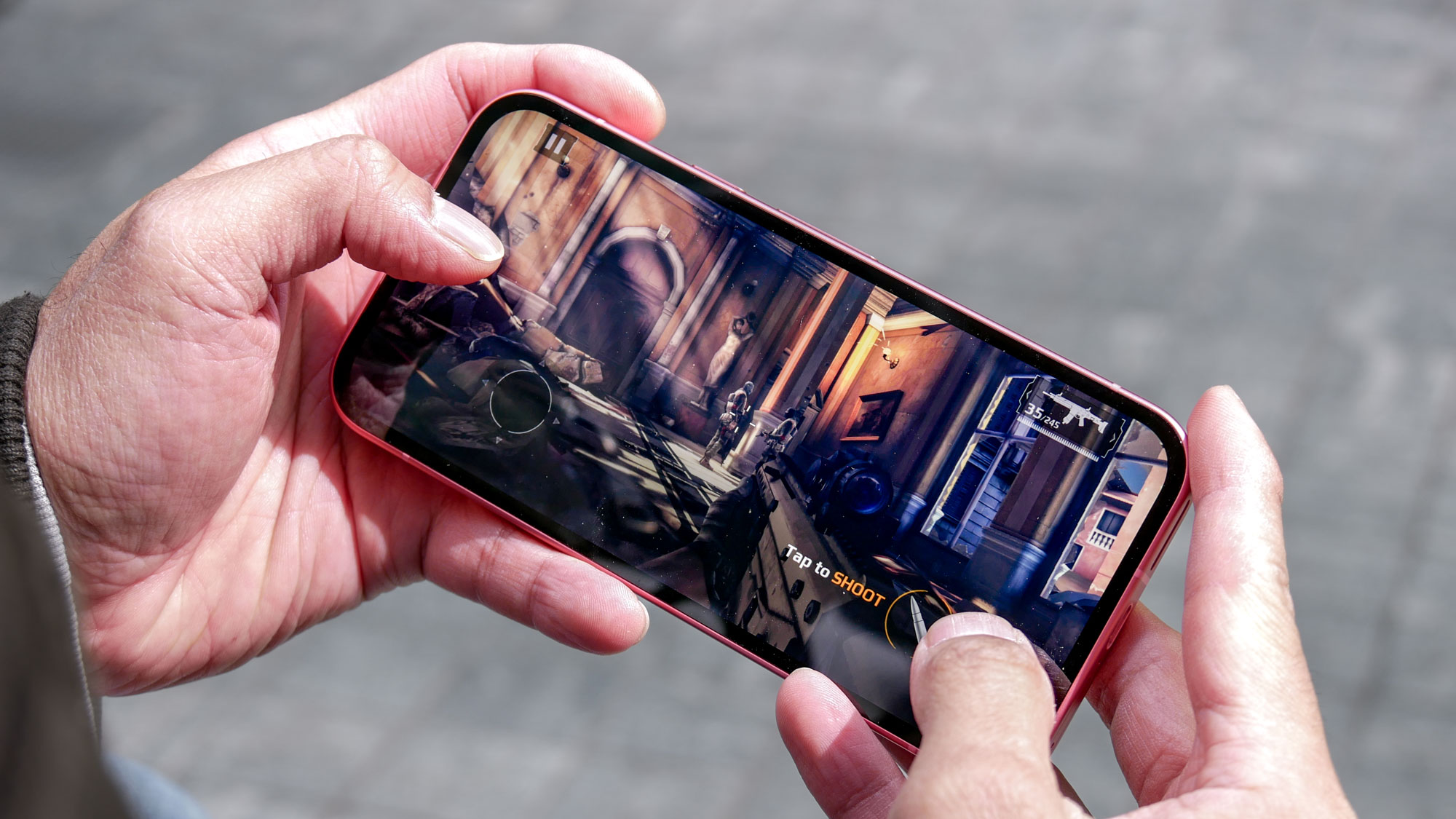Google Pixel 9a performance tested — here's how it compares to the best cheap phones
We tested the Google Pixel 9a's performance against 6 other phones — and these are the results

Now the Google Pixel 9a is officially available, we've been able to run our usual battery of tests to see how strong this phone actually is.
Google's given the Pixel 9a its latest Tensor G4 chip, the same found in the Pixel 9 series, just with less RAM to accompany it and a different 5G modem. So while Google's not selling this phone on its power, it's still a good start for a $500 phone to use the same chip Google sees fit to sell in its $1,700 foldable.
We're about to take you through three sets of results for the Pixel 9a from the TG lab, along with those for several members of the best Android phones and best cheap phones. Although benchmarks can't tell the whole story, it'll demonstrate how capable the 9a is compared to other phones you may be considering upgrading to.
The contestants
We're comparing seven different phones in this feature, including the Google Pixel 9a, the star of the show. To start with, let's look at the relevant performance specs: the chipsets these phones use, and how much RAM they have.
| Row 0 - Cell 0 | Pixel 9a | Pixel 8a | Pixel 9 | Galaxy A56 | iPhone 16e | Nothing Phone 3a Pro | OnePlus 13R |
Chipset | Google Tensor G4 | Google Tensor G3 | Google Tensor G4 | Exynos 1580 | Apple A18 | Snapdragon 7s Gen 3 | Snapdragon 8 Gen 3 |
RAM (GB) | 8 | 8 | 12 | 8 | 8 | 12 | 12 |
What we can see here is the majority of these phones running with 8GB RAM except in a few cases, and a spread of chips including Apple's A18 chip at the top end and Samsung's Exynos 1580 at the bottom. The Snapdragon 8 Gen 3 in the OnePlus 13R is technically a flagship-grade chip too, but it's over a year old, replaced by the Snapdragon 8 Elite seen in this year's top tier Android phones.
Looking at the Pixel 9a more specifically, it's using a chip also used in the Pixel 9, a full-priced flagship phone, but with less RAM as we mentioned. That puts it in a similar boat to the iPhone 16e, which is using the same basic chip as the more expensive iPhone 16, but with a "binned" GPU that reduces some aspects of performance.
Geekbench 6
| Row 0 - Cell 0 | Pixel 9a | Pixel 8a | Pixel 9 | Galaxy A56 | iPhone 16e | Nothing Phone 3a Pro | OnePlus 13R |
Geekbench 6 score (single-core/multi-core) | 1,707 / 4,512 | 1,581 / 4,093 | 1,758 / 4,594 | 1,358 / 3,867 | 3,328 / 8,132 | 1,166 / 3,275 | 2,098 / 6,533 |
We begin with the scores from Geekbench 6, a popular CPU benchmarking app. With modern chipsets dividing work between multiple cores, we have here the single-core score, showing the power of each phone's most powerful core, and the overall multi-core score for the capability of the whole chip.
Sign up to get the BEST of Tom's Guide direct to your inbox.
Get instant access to breaking news, the hottest reviews, great deals and helpful tips.
The figures show the iPhone 16e way out in front for both metrics, with the OnePlus 13R as the silver medallist, and the Google Pixel 9a coming in a respectable fourth, just behind its bigger sibling, the Pixel 9. The Pixel 8a from last year follows, showing there's not a huge difference between Pixel a-series generations, with the Galaxy A56 and the Nothing Phone 3a Pro coming at the bottom end, although within 20 - 30% of the Pixel 9a's results.
3DMark Wild Life Extreme Unlimited
| Row 0 - Cell 0 | Pixel 9a | Pixel 8a | Pixel 9 | Galaxy A56 | iPhone 16e | Nothing Phone 3a Pro | OnePlus 13R |
3DMark Wild Life Extreme Unlimited (score / fps) | 2,634 / 15.77 | 2,375 / 14.23 | 2,550 / 15.27 | 1,248 / 7.4 | 2,644 / 15.83 | 1,067 / 6.39 | 4,793 / 28.7 |
3DMark's Wild Life Extreme Unlimited is a mouthful, but is a benchmark that runs on phones old and new, cheap and premium, giving us a good idea of how lots of phones' GPU performance match up against each other.
The Pixel 9a comes in third place, only slightly behind the iPhone 16e, which is an impressive result. The Pixel 9a and Pixel 8a aren't far behind, but the Galaxy A56 and Nothing Phone 3a Pro are again a long way behind. The OnePlus 13R meanwhile is way ahead, showing even a year-old chip can still deliver in the cheaper segments of the smartphone market.
Adobe Premiere Rush
| Row 0 - Cell 0 | Pixel 9a | Pixel 8a | Pixel 9 | Galaxy A56 | iPhone 16e | Nothing Phone 3a Pro | OnePlus 13R |
Adobe Premiere Rush time to transcode (mins:secs) | 1:24 | 0:56 | 1:18 | 3:19 | 0:21 | 1:45 | 1:23 |
A test of TG's own design, we feed a 4K video into Adobe's mobile video editing app, add a couple of effects and then convert it into a 1080p video. This is a more general test of processing power, although it can be made a lot easier if a phone has a dedicated media processing engine.
That's why the iPhone 16e's lead is even further ahead of the pack this time, capable of processing the sample video four times in the same time it takes the Pixel 9a to do it once. Concerningly, the Pixel 8a manages to finish almost 30 seconds ahead of the Pixel 9a and about 20 seconds ahead of the Pixel 9, which is a bit of a headscratcher.
Still, things could be worse. You could be taking one and a half times the length of our test video to process it, as the Galaxy A56 does. It's firmly in sixth place, with even its bottom of the performance pile friend the Nothing Phone 3a Pro finishing processing in almost half the time.
Outlook
It's easy to forget when trying to compare phones, but benchmarks don't tax a device's processors in the same way as regular use. They're a guideline to performance only.
That said, the Pixel 9a did pretty well in our testing. Other than the weird Adobe Premiere Rush result, it's ahead of the Pixel 8a, and not too far behind the Pixel 9 that sits above it in Google's phone line-up.
The iPhone 16e is hardly troubled by the Pixel 9a, and the OnePlus 13R isn't either. But both of those also cost $100 more than the Pixel. The Galaxy A56 and Nothing Phone 3a Pro meanwhile are around the same price, but are noticeably less powerful, cementing the Pixel 9a as one of the best performance-per-dollar ratios of any new phone.
Take a look at our full Google Pixel 9a review for more on what makes this phone such a strong contender. But rest assured that, while you won't be breaking records with the 9a's chip, it's got more than enough power for most users' needs.

Richard is based in London, covering news, reviews and how-tos for phones, tablets, gaming, and whatever else people need advice on. Following on from his MA in Magazine Journalism at the University of Sheffield, he's also written for WIRED U.K., The Register and Creative Bloq. When not at work, he's likely thinking about how to brew the perfect cup of specialty coffee.
You must confirm your public display name before commenting
Please logout and then login again, you will then be prompted to enter your display name.
